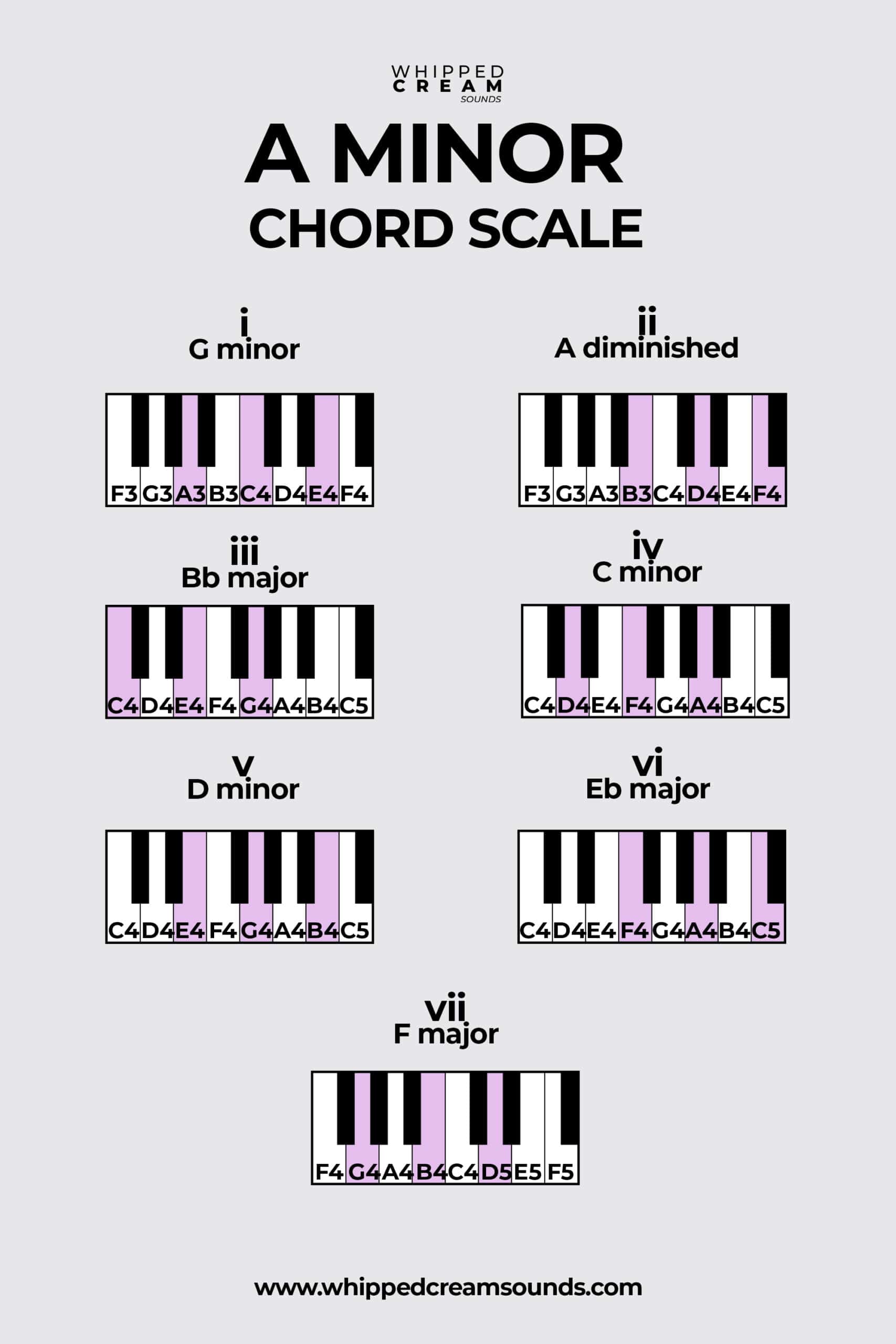The A minor chord scale is a series of chords that can be found in the key of A minor. You can use the A minor scale to create emotions of tenderness and womanliness in your melodies and chord progressions. In this article, we’ll cover everything you need to know about the A minor chord scale, what it uses are and why that’s important to know for producers.
What Are The Chords in The Key of A Minor
To understand what the chords in the key of A minor are, you’ll need to know what notes make up the A minor piano scale first. You can then use formulas to work out the series of chords and how to build them note by note to end up playing them.
The A minor scale is as follows:
A, B, C, D, E, F, G
When you have the notes of the A minor scale, you can now use formulas to find out the order in which the chords are played, and what their qualities are. You just plug the formulas below into any scale and you’ll be able to find the major or minor chord scale of them.
The major & minor chord scale formulas are:
Major: major, minor, minor, major, major, minor, diminished
Minor: minor, diminished, major, minor, minor, major, major
Because you’re working in the minor key, you’ll need to use the minor chord scale formula. This will work out the order of chords and the quality of each chord.
Therefore the A minor chord scale is as follows:
- A minor
- B diminished
- C major
- D minor
- E minor
- F major
- G major
Now, if you know your basic chord shapes, you’ll be able to play the A minor chord scale. If you don’t know your basic triads, no worries! You can use chord spellings to work out the notes in each chord.
The most common chord spellings are:
- Major – 1, 3, 5
- Minor – 1, b3, 5
- Diminished – 1, b3, b5
- Augmented – 1, 3, #5
Now, if we take the 3rd chord as an example (C major), because it’s C major, you’ll need to use the major key and the major spelling to work out the chord. Doing this, will give you the correct notes you need to play in order to make up the C major chord.
For example: take the C major scale, count the 1 note (C), then the 3 note (E), then the 5 note (G). This gives you your C major chord.
This is a repeatable process, so you can do this for all the chords in the A minor chord scale. If you do, you must use the root note of the chord you are trying to create and the major scale of that root note – even if it isn’t a major chord.
E.G. A (root note – use the major scale of this) minor (quality – use the minor spelling)
Which Notes Make Up The Chords of The A Minor Scale?
Now you know the chords in the A minor scale, it’s important to know which notes make up those chords.
- A minor – A, C, E
- B diminished – B, D, F
- C major – C, E, G
- D minor – D, F, A
- E minor – E, G, B
- F major – F, A, C
- G major – G, B, D
Common Chord Progressions in A Minor
Now you know how to play the A minor scale – well done! You can use pre-made chord progressions that already sound good to create chord melodies rapidly. This is really easy to do, and you can use these chord progressions in any scale.
To do this, all you need to do is use the roman numerals in the chord progression and match it with the roman numeral on your chord scale chart.
Anything with a 6, 7, 9 after it, is an extension chord, lowercase = minor, and uppercase = major.
Here are some common chord progressions in A minor:
- I, vi, IV, V
- I, bVI, V
- vi–IV–I–V
- IV–I–V–vi


